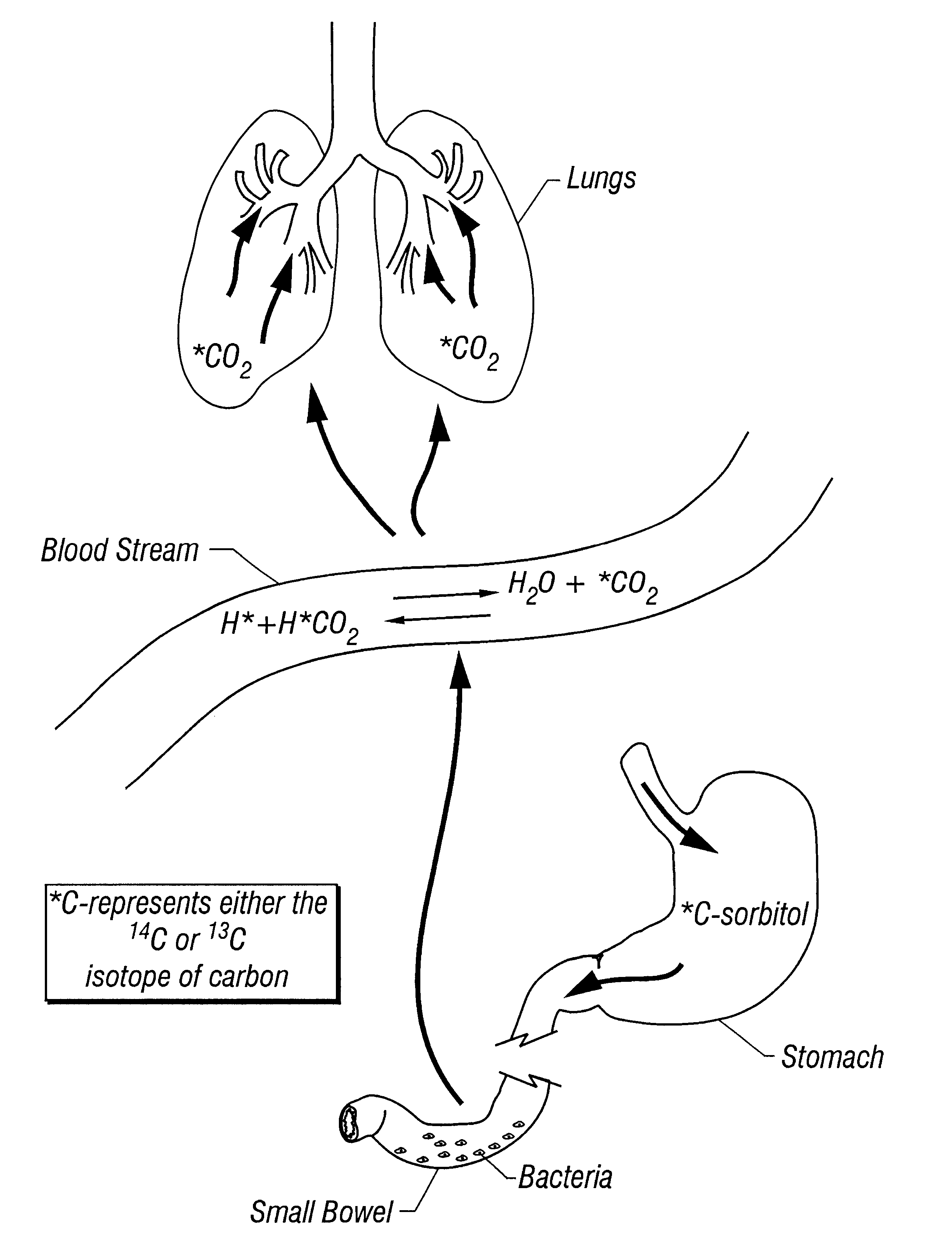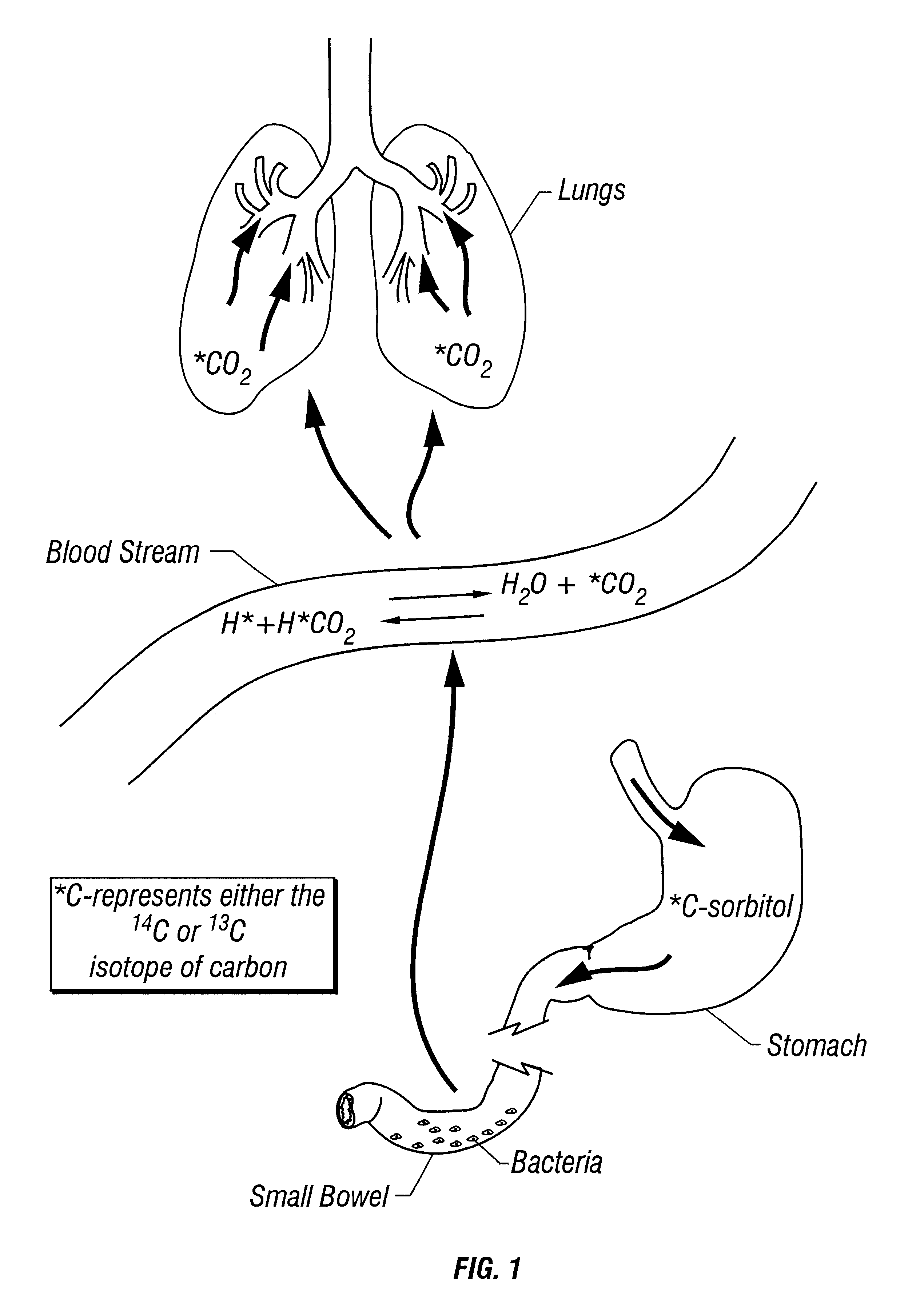Non-invasive test for assessing bacterial overgrowth of the small intestine
a bacterial overgrowth and non-invasive technology, applied in biochemistry apparatus and processes, biocide, therapy, etc., can solve the problems of bacterial overgrowth that is difficult to diagnose with accuracy, bacterial overgrowth is never cured, and bacterial overgrowth requires constant monitoring and therapy
- Summary
- Abstract
- Description
- Claims
- Application Information
AI Technical Summary
Problems solved by technology
Method used
Image
Examples
Embodiment Construction
Methods:
Nineteen patients with symptoms suggestive of small bowel bacterial overgrowth (diarrhea, weight loss, bloating, and abdominal pain) were prospectively evaluated with jejunal cultures and non-invasive breath tests utilizing .sup.14 C-xylose, .sup.13 C-xylose, and .sup.13 C-sorbitol. Results are reported as percent of .sup.14 C or .sup.13 C recovered in exhaled CO.sub.2. Jejunal cultures were obtained from three intestinal aspirates distal to the ligament of Treitz using standard methods. The culture was considered positive if the number of colonies of relevant species was 10.sup.5 or higher.
Breath tests were performed after an overnight fast. 150 milligrams of .sup.14 C-xylose or .sup.13 C-xylose or 200 milligrams .sup.13 C-sorbitol was dissolved in 250 milliliters water and ingested orally. Breath samples were collected at 30 minute intervals for 4 hours.
Results:
Nine of nineteen patients had positive jejunal cultures and were positive for small bowel bac...
PUM
| Property | Measurement | Unit |
|---|---|---|
| mass spectrometric measurement | aaaaa | aaaaa |
| nuclear magnetic resonance | aaaaa | aaaaa |
| liquid scintillation counting | aaaaa | aaaaa |
Abstract
Description
Claims
Application Information
 Login to View More
Login to View More - R&D
- Intellectual Property
- Life Sciences
- Materials
- Tech Scout
- Unparalleled Data Quality
- Higher Quality Content
- 60% Fewer Hallucinations
Browse by: Latest US Patents, China's latest patents, Technical Efficacy Thesaurus, Application Domain, Technology Topic, Popular Technical Reports.
© 2025 PatSnap. All rights reserved.Legal|Privacy policy|Modern Slavery Act Transparency Statement|Sitemap|About US| Contact US: help@patsnap.com


